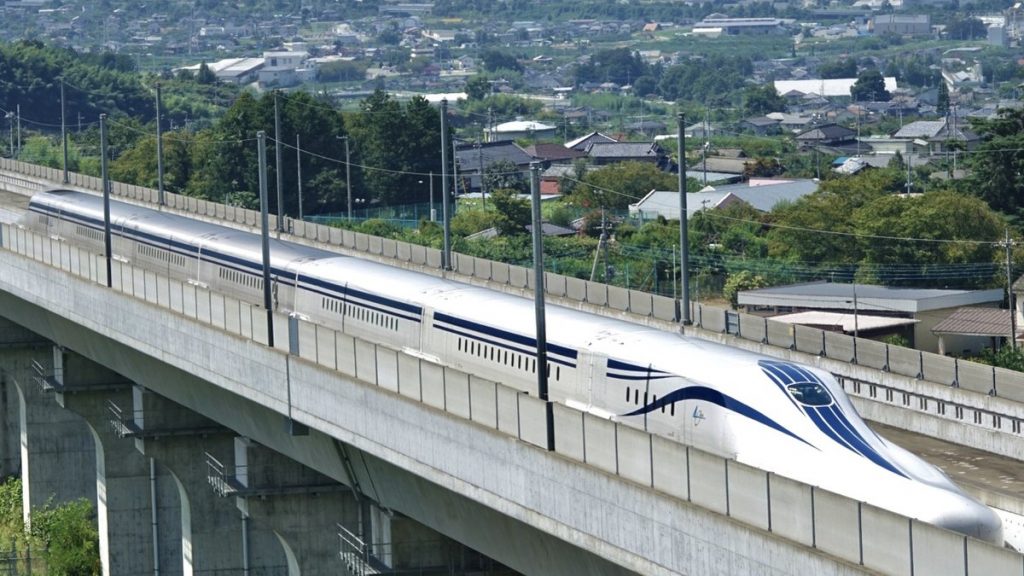
Maglev Chuo Shinkansen (Tokyo–Nagoya) is a 286-kilometer Japanese rail line under construction between Tokyo and Nagoya, with plans for extension to Osaka.
After the line is completed, sections will be extended to connect the cities of Mie, Nara and Osaka. Using magnetic levitation, the highspeed trains using the lines will connect Tokyo and Nagoya in only 40 minutes. When connected to Osaka, the journey will take 67 minutes. 90 percent of the line will be under tunnels with a minimum curve radius of 8,000 m (26,000 ft) and a maximum grade of 4%.
Since the 1970s, the government of Japan has funded maglev development. The trains will use SCMaglev technology, a maglev (magnetic levitation train) system which uses levitating forces generated between superconducting magnets on the trains and coils on the track. Because there is no wheel friction, the trains can travel at much higher speeds than conventional highspeed trains.
In conjunction with Japan Airlines and now Central Japan Railway Company, which conducts research and operates the line.
In 2016, preparations for work began at Nagoya, with construction work commencing in 2019 . The 82 billion USD project was initially scheduled to be opened in 2027 but now has been pushed back to 2034. The project’s huge cost is due in part to the fact most of the line will run in tunnels. Some sections will be as deep as 40 m underground.
In 2018, when a scientific comparison of the energy consumption of SCMaglev, Transrapid and conventional high-speed trains was undertaken, it was found that maglevs reach much higher speeds than conventional trains. And because the trains run mostly under tunnels, their air resistance will be much higher than that of most highspeed rails. This significantly increases energy consumption. However, conventional trains require much lower energy at lower speeds.
- Subscribe to Our Newsletter: Stay updated with the latest insights, tips, and innovations in civil engineering.
- Check Out These Must-Read Resources:
- A comprehensive book on civil engineering to enhance your understanding of structural design and construction techniques.
- A captivating book about the lives of great civil engineers, showcasing the pioneers who shaped the modern world.
- A practical project inspection checklist—an essential tool for every engineer involved in site supervision and quality control.
- Dive into the genius of the Renaissance with our recommended book about Leonardo da Vinci, exploring his contributions to engineering and architecture.
- Don’t miss our field notebook and journal, designed specifically for civil engineers and architects to document projects, ideas, and on-site observations
No responses yet